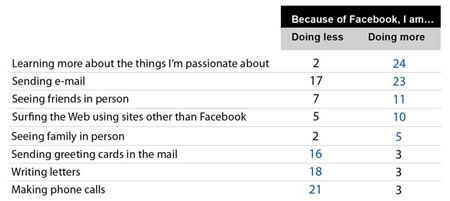
A note from Ed Kelly: content, contentment, relevance, resonance
What’s the story, who’s telling it, what’s it look like, and who cares?
I’ve been an American Express cardholder for coming on 20 years. And I met Ed Kelly, CEO, American Express, the briefest of encounters, some years back at the American Express Luxury Summit, Palm Beach. There were a number of connections there — but linking to him was interesting. For me, his presentation was about storytelling — the link between brand and story, narrative and emotional relationships. We talked about it.
His newest overview — in a note to cardholders, I’m presuming — offers the concept of the what, the why, the how of social media. We all want to know:
• What is the smartest way to present our brands on Facebook and Twitter?
• How do we balance the benefits of accessing a wider audience against the risks of losing control of the communication?
• Are our customers already using social media to engage with and comment on our products?
And there is another key question as well: Is promoting our brands on social networks an acceptable alternative to advertising in traditional media?”
He’s referenced, as well, the American Express testing and relational network, “the Ambassadors Network™ is a community of more than 15,000 of the most engaged consumers of our magazines—Travel + Leisure, Food & Wine, Departures, and Executive Travel—mostly American Express Cardmembers. Opinions shared — brands and relationships to them. Really, that question might be: “who cares?”
AmEx asked for their thoughts on the value of social media, how they use it, and how it influences their shopping. The play might be obvious. They found that “social media plays an important role in their communications.
• Seven-in-ten respondents say they have Facebook accounts and spend an average of 3.3 hours per week on them—that’s nearly 20% of the 17 hours they spend each week on non-work-related interests online.
• Moreover, their Facebook usage is fundamentally re-shaping their online—and offline—behavior.
The outcomes reveal, to the AmEx research stake, that “because of Facebook, they’re exploring their passions more deeply, sending more e-mail, and surfing the Web more. Conversely, they’re making fewer phone calls, writing fewer letters, and sending fewer greeting cards.” What might be the balance of beneath there?
The AmEx scoreboard:

“Facebook is here to stay: less than one in ten dismisses Facebook as a fad. This makes it all the more important for marketers to understand the role of social media sites in their overall marketing mix, and in how consumers make decisions today.” I was wondering where this might be going. And there’s more to it, the pitch.
To Ed’s take, it’s “Think outside the facebox.”
• Build interactive space. “Food & Wine has 55,000-plus fans on Facebook and thatTravel + Leisure has 38,000-plus followers on Twitter, but we’re also proud of the Food & Wine website, which has 85,000-plus registered users who have shared tens of thousands of their favorite recipes, uploaded thousands of photos, and created hundreds of blogs. We believe we can nurture our communities of users who are passionate about the travel and food lifestyle in a way that larger, undifferentiated networks can’t.”
• Help people spread the word. “You probably spent years honing your brand message—don’t let your customers ad lib it. Provide them with content that respects your brand, extends your advertising efforts, and is convenient for dissemination. For instance, hotel websites should make it easy for guests to share the hotel’s professional-quality images with their friends back home. Food sites should enable visitors to share their favorite recipes from the site, and fashion sites should help users disseminate reviews and even runway videos.
• Advertising counts, now more than ever. Your print ads take on a new dimension in the world of social networks; they give people something to talk about. Networkers resist being advertised to in their personal media, but that doesn’t mean that they won’t carry your message. Help your customers express themselves through their association with your products and brands.
• An old story, new. A new medium for an old message, personal and passion-based. If you want social media to work for you, use your advertising dollars to promote ideas that can be passed along. Through that affinity, you’ll create binding brand relationships.
His closing is perhaps the most relevant to my take. Everything is about passion and commitment, the willingness to do more for yourself, your team, your strategy and your community relationships. How hard are you willing to work for it?
“Brands matter,” Mr. Kelly intones. It’s an old world that is newly defined — the message and the relationship. Who’s listening, who cares?
I’d proffer that the old story that is newly made is the very principle of the story itself. A story is a story told, narrative is recalled. And, as we’ve referenced, it’s what is remembered that is what is held in the heart. And these days, relationships are about the heart holding that which is most dear — to brands — that’s either a connection, or disconnection.
The fundamentals remain the same, to Ed Kelly’s review, “Be passionate. Form a community. Understand how your customers make decisions. Communicate the right information through the right media. Encourage your customers to speak up. Respect and respond to what they say. Help those who like you to love you. Enable those who love you to spread
the word. When you make a mistake, own it and fix it—fast. Conduct yourself as if the whole world is watching. Because it is.”
The world is watching — but what are they watching? If they’re focused on an increasing link to the Facebook, twittering interspace of social media, then the bridging between one space and another will be the crucial character. The point will be the neverending strategy of resonance and relevance in relationship.
One story begets another. The rippling spreads, for good or bad. Content and contentment, resent or resentment.
tsg
….
Brands | storytelling | twitching:
https://www.girvin.com/blog/?s=twittering
the reels: http://www.youtube.com/user/GIRVIN888
girvin blogs:
http://blog.girvin.com/
https://tim.girvin.com/index.php
girvin profiles and communities:
TED: http://www.ted.com/index.php/profiles/view/id/825
Behance: http://www.behance.net/GIRVIN-Branding
Flickr: http://www.flickr.com/photos/tgirvin/
Google: http://www.google.com/profiles/timgirvin
LinkedIn: http://www.linkedin.com/in/timgirvin
Facebook: http://www.facebook.com/people/Tim-Girvin/644114347
Facebook Page: http://www.facebook.com/pages/Seattle-WA/GIRVIN/91069489624
Twitter: http://twitter.com/tgirvin